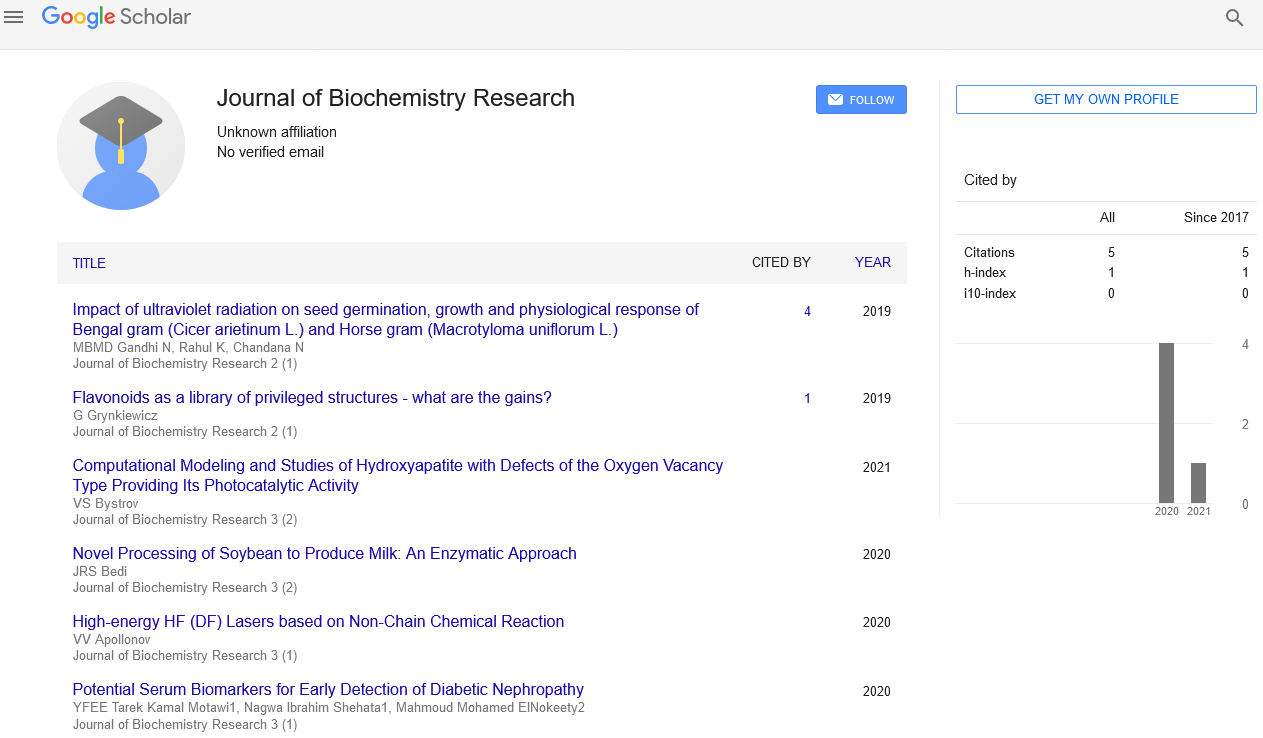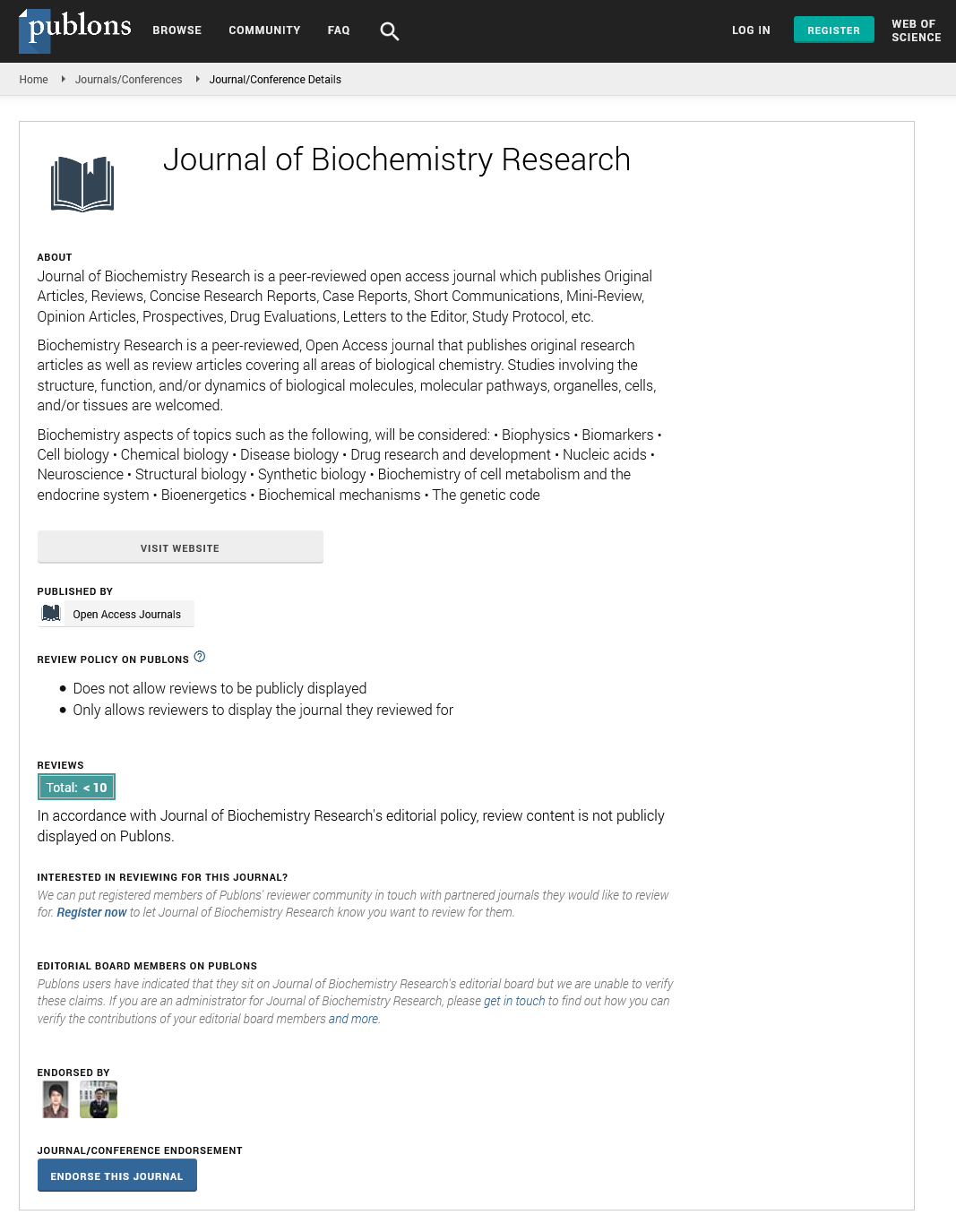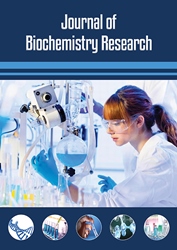Mini Review - Journal of Biochemistry Research (2023) Volume 6, Issue 2
Cell Membrane Transport and Signal Transduction: Passive and Active Transport
Dr. Luísa James*
Department of Stem Cell and Research, University of Sunrise, United Kingdom
Department of Stem Cell and Research, University of Sunrise, United Kingdom
E-mail: luisa.j@gmail.com
Received: 03-April-2023, Manuscript No. oabr-23-96581; Editor assigned: 05-April-2023, PreQC No. oabr-23- 96581; Reviewed: 19-April-2023, QC No. oabr-23-96581; Revised: 21-April-2023, Manuscript No. oabr-23-96581 (R); Published: 28-April-2023; DOI: 10.37532/ oabr.2023.6(2).26-28
Abstract
Cell membrane transport and signal transduction are fundamental processes in cellular biology that govern the communication and exchange of molecules between the internal and external environment of cells. Cell membrane transport includes the movement of molecules across the cell membrane, which can occur via various mechanisms, including passive diffusion, facilitated diffusion, and active transport. These processes are essential for maintaining cellular homeostasis and enabling cells to respond to changes in their environment. Signal transduction involves the transmission of signals across the cell membrane, which enables cells to detect and respond to external stimuli. This process involves the binding of extracellular ligands to membrane-bound receptors, which triggers a cascade of intracellular events that ultimately lead to a cellular response. These responses can range from changes in gene expression to alterations in cellular metabolism and physiology. Overall, cell membrane transport and signal transduction are crucial processes that allow cells to interact with their environment and maintain their functional integrity. A better understanding of these processes is essential for developing new treatments for various diseases, including cancer, diabetes, and neurological disorders. The cell membrane is a crucial component of all living cells, which separates the internal environment of the cell from the external environment. It is a selectively permeable barrier that allows some molecules to pass through while preventing others from doing so. The cell membrane also plays a crucial role in signal transduction, the process by which cells communicate with each other and respond to changes in their environment. In this article, we will explore the various mechanisms of cell membrane transport and signal transduction.
Keywords
Cell membrane transport • Signal transduction • Cellular biology • Facilitated diffusion • Cancer • Diabetes • Neurological disorders • Living cells
Introduction
Cell membrane transport and signal transduction are two vital processes that occur in every living cell. The cell membrane is a thin, semi-permeable layer that separates the inside of the cell from the outside environment. It is responsible for maintaining the integrity of the cell by regulating the entry and exit of molecules and ions. Cell membrane transport is the process by which molecules and ions move in and out of the cell through the cell membrane [1]. This process can occur through several mechanisms, including passive diffusion, facilitated diffusion, active transport, and endocytosis/exocytosis. Passive diffusion occurs when small, uncharged molecules move across the membrane from areas of high concentration to areas of low concentration, without the need for energy input. Facilitated diffusion, on the other hand, occurs when larger or charged molecules require the assistance of transport proteins to cross the membrane [2]. Active transport requires the input of energy to move molecules against their concentration gradient, while endocytosis and exocytosis involve the movement of larger molecules or particles in or out of the cell by engulfing or releasing them through the cell membrane. Signal transduction is the process by which cells receive and respond to external signals, such as hormones, growth factors, and neurotransmitters. These signals are detected by specific receptors on the cell membrane, which activate signaling pathways within the cell [3]. Signaling pathways involve a series of molecular events that lead to changes in the cell’s behavior, such as gene expression, enzyme activity, or cell division. There are several types of cell membrane receptors, including G proteincoupled receptors (GPCRs), receptor tyrosine kinases (RTKs), and ion channels. Each type of receptor activates a unique set of signaling pathways and cellular responses. For example, GPCRs activate second messenger signaling pathways, while RTKs activate downstream signaling cascades involving phosphorylation and dephosphorylation of specific proteins [4]. Cell membrane transport and signal transduction are essential for maintaining the proper functioning of cells and organs in the body. Dysregulation of these processes can lead to a variety of diseases, including cancer, metabolic disorders, and neurological disorders. Understanding the mechanisms and regulation of cell membrane transport and signal transduction is crucial for developing new therapies and drugs to treat these diseases [5].
Cell membrane Transport
Cell membrane transport refers to the movement of molecules across the cell membrane. There are two main types of cell membrane transport: passive transport and active transport [6].
Passive transport and Active transport
Passive transport does not require energy and occurs spontaneously, moving molecules from areas of high concentration to areas of low concentration. This process is known as diffusion. Molecules that can diffuse across the cell membrane include gases, such as oxygen and carbon dioxide, and small, uncharged molecules, such as water and ethanol [7].
Another form of passive transport is facilitated diffusion, which is used to move molecules that cannot diffuse through the cell membrane on their own, such as large or charged molecules. Facilitated diffusion requires the presence of specific membrane proteins, such as ion channels or transporters, which act as pores or gates to allow specific molecules to pass through [8].
Active transport requires energy in the form of ATP, and moves molecules against their concentration gradient, from areas of low concentration to areas of high concentration. This process is carried out by membrane proteins called pumps. Examples of pumps include the sodium-potassium pump, which maintains the resting potential of neurons, and the proton pump, which is involved in the acidification of the stomach [9].
Signal Transduction
Signal transduction refers to the process by which cells detect and respond to signals from their environment. These signals can come from other cells, hormones, growth factors, or physical and chemical changes in the environment.
Signal transduction can be divided into three main stages: reception, transduction, and response [10].
Reception and Transduction
Reception is the initial step in signal transduction, in which the cell detects the presence of a signal. This is carried out by membrane-bound receptors, which bind to specific ligands, such as hormones or growth factors that are present in the extracellular environment.
Once the ligand has bound to the receptor, the receptor undergoes a conformational change that activates a signaling pathway within the cell. This pathway involves a series of signaling molecules, such as second messengers or protein kinases that relay the signal from the cell membrane to the nucleus.
Response
The final stage of signal transduction is the response, in which the cell produces a specific biological response to the signal. This response can take many forms, such as changes in gene expression, alteration of cell metabolism, or modification of cell behavior. Examples of signal transduction pathways include the cAMP pathway, which is involved in the regulation of glycogen metabolism, and the MAPK pathway, which is involved in the regulation of cell proliferation and differentiation.
Conclusion
The cell membrane is a dynamic and complex structure that plays a crucial role in the transport of molecules and the transmission of signals. By understanding the mechanisms of cell membrane transport and signal transduction, we can gain insight into the fundamental processes that govern cell function and behavior.
References
- Berkhemer OA.A randomized trial of intra-arterial treatment for acute ischemic stroke. N Engl J Med. 14, 473-478 (2015).
- Rodrigues FB.Endovascualar treatment versus medical care alone for ischemic stroke: a systemic review and meta-analysis. BMJ. 57, 749-757 (2016).
- Uduak CU, Edem I. Analysis of Rainfall Trends in Akwa Ibom State, Nigeria. J Environ Sci. 2: 60-70 (2012).
- Crippen TL, Poole TL.Conjugative transfer of plasmid-located antibiotic resistance genes within the gastrointestinal tract of lesser mealworm larvae,Alphitobius diaperinius(Coleoptera: Tenebrionidae). Foodborne Pathog Dis. 7, 907-915 (2009).
- Fonseca, Frederico Torres. Using ontologies for geographic information integration. Transactions in GIS.6,231-257 (2009).
- Imrie, Rob. Industrial change and local economic fragmentation: The case of Stoke-on-Trent. Geoforum. 22, 433-453 (1991).
- Kamilaris A, Prenafeata-Boldú F. Deep learning in agriculture: A survey.Comput Electron Agric.147, 70-90 (2018).
- Mamdouh N, Khattab A. YOLO-based deep learning framework for olive fruit fly detection and counting. IEEE Access. 9, 84252-8426 (2021).
- Goyal M.Endovascular thrombectomy after large vessel ischaemic stroke: a meta- analysis of individual patient data from five randomised trials. Lancet. 22, 416-430 (2016).
- Tetila EC, Machado BB et al. Detection and classification of soybean pests using deep learning with UAV images. Comput Electron Agric. 179, 105836 (2020).
Indexed at, Google Scholar, Crossref
Indexed at, Google Scholar, Crossref
Indexed at, Google Scholar, Crossref
Indexed at, Google Scholar, Crossref


